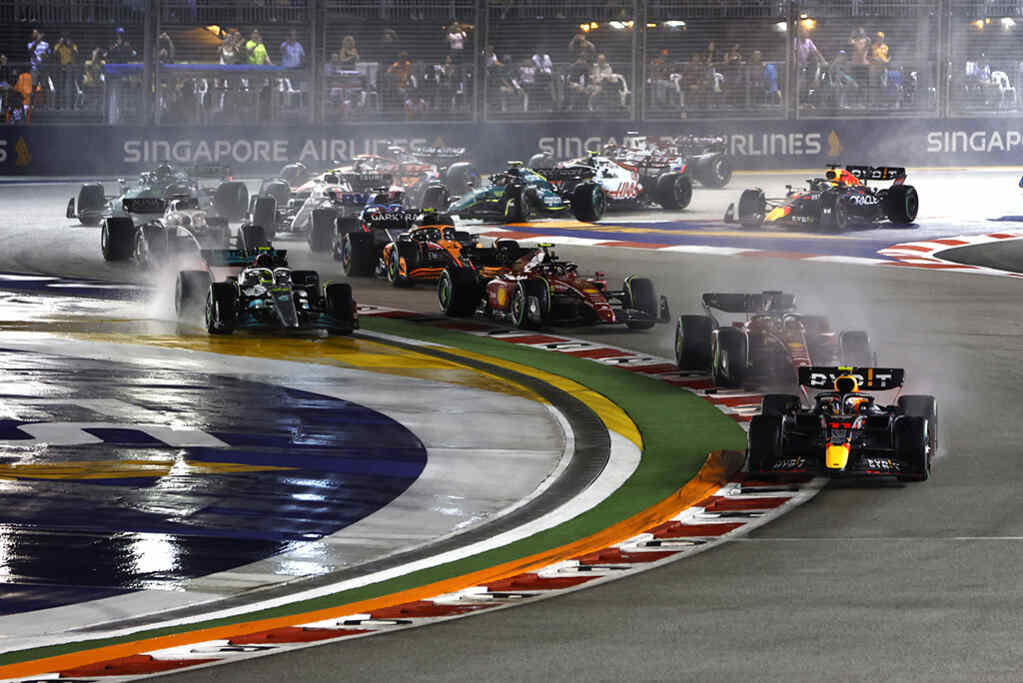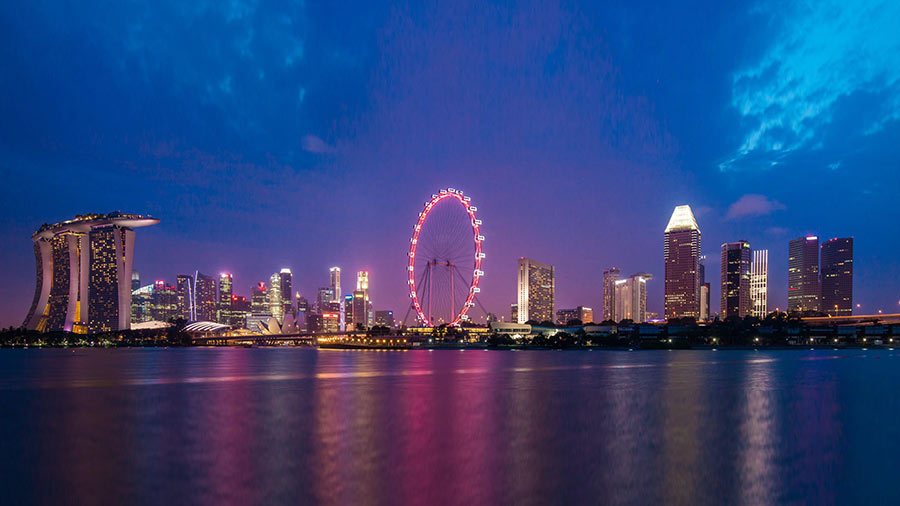F*** the rain. Black Eyed Peas kept swearing the rain away in a high-energy live performance; but it took a while to work.
The rain kept beating down on Singapore’s street circuit even as the American musical group kept singing Tonight’s Gonna be a Good Night. It eventually was a brilliant night, one that F1 geeks and casual F1 observers will treasure. It was particularly magical for those fans who got their first taste of live Formula 1 action.
I was one of them.
“It never rains on race day,” said Gerard, my schoolmate, who has been a regular at the Singapore Grand Prix since 2008, dismissing the urge to carry a rain jacket. That’s quite a deal in a city where it rains almost every day, given Singapore’s proximity to the Equator. But Gerard got his weather prediction wrong and so did the weather forecasts, as the rain pounded the track and fans like me who opted for enclosures without a roof (I caught the race from the Zone 4 Walkabout) were drenched to the skin in no time. The rain eventually stopped and the race began an hour late.

The energy of the F1 fans is infectious. The three-day event set a new record with 302,000 fans in attendance Courtesy: Singapore Grand Prix
Seasoned F1 drivers have often described the Singapore Grand Prix as the toughest race of the Formula 1 calendar. The temperature hovers around 30 degrees, with humidity levels of around 80 per cent. That’s for fans who are seated in the stands. For drivers in their fire-proof suits, the temperatures can feel like 60 degrees. Many drivers spend a lot of time in saunas as part of their pre-race prep. It’s not just the weather and the high amount of sweat and bodily fluid loss that drivers have to deal with. The race features 23 corners with little margin for error and a run time of about two hours — the longest and slowest on the calendar. The twisty circuit also includes 90-degree turns that all make for compelling viewing.
There’s one thing you know even before you set out to a Formula 1 race. The best seats are actually in your house, in front of your TV or projector screen. F1 is a TV sport. While some of the grandstands in Singapore and other venues have great views, you only get snatches of the action unless you’re following the drivers on a big screen or on a handheld screen. But we don’t just go to the Grand Prix for the views, do we?
We go for the sound of that roar. That feeling when your adrenaline is pumped up and makes you scream louder than a sighting of your favourite Indian celebrity (even when you’re soaking wet). That high-pitched sound of cars about to make their way past your enclosure and you can hear them a few milli-seconds before you see them whizz past. Most regulars will tell you to turn on your video mode as soon as you hear that sound and the only way to slow them down is to capture these beauties on slow-mo mode. You will experience the same thrill 61 times during the race. The Singapore GP is a 61-lap race with an effective distance of over 300km, though only 59 were completed this year due to the time limit being reached.

The race is held under the night lights of Singapore’s Marina Bay, making it one of the most spectacular venues on the racing calendar Courtesy: Singapore Grand Prix
Red Bull fans celebrated as Sergio Perez held off a tough challenge from Ferrari’s Charles Leclerc to win his first Singapore GP in tough, rain-affected conditions. I was rooting for George Russel and Mercedes but in the end it didn’t matter. The result was less significant than the high-adrenaline experience of the race. It’s probably what keeps bringing fans back to the only night street circuit on the F1 calendar.
This year the Singapore GP hit an all-time high with an attendance record of 302,000 fans (over the three-day race weekend) marking a spectacular return since 2019 (there was no race in 2020 and 2021 due to the pandemic). F1 frenzy or revenge tourism? The answer might lie somewhere in between.


